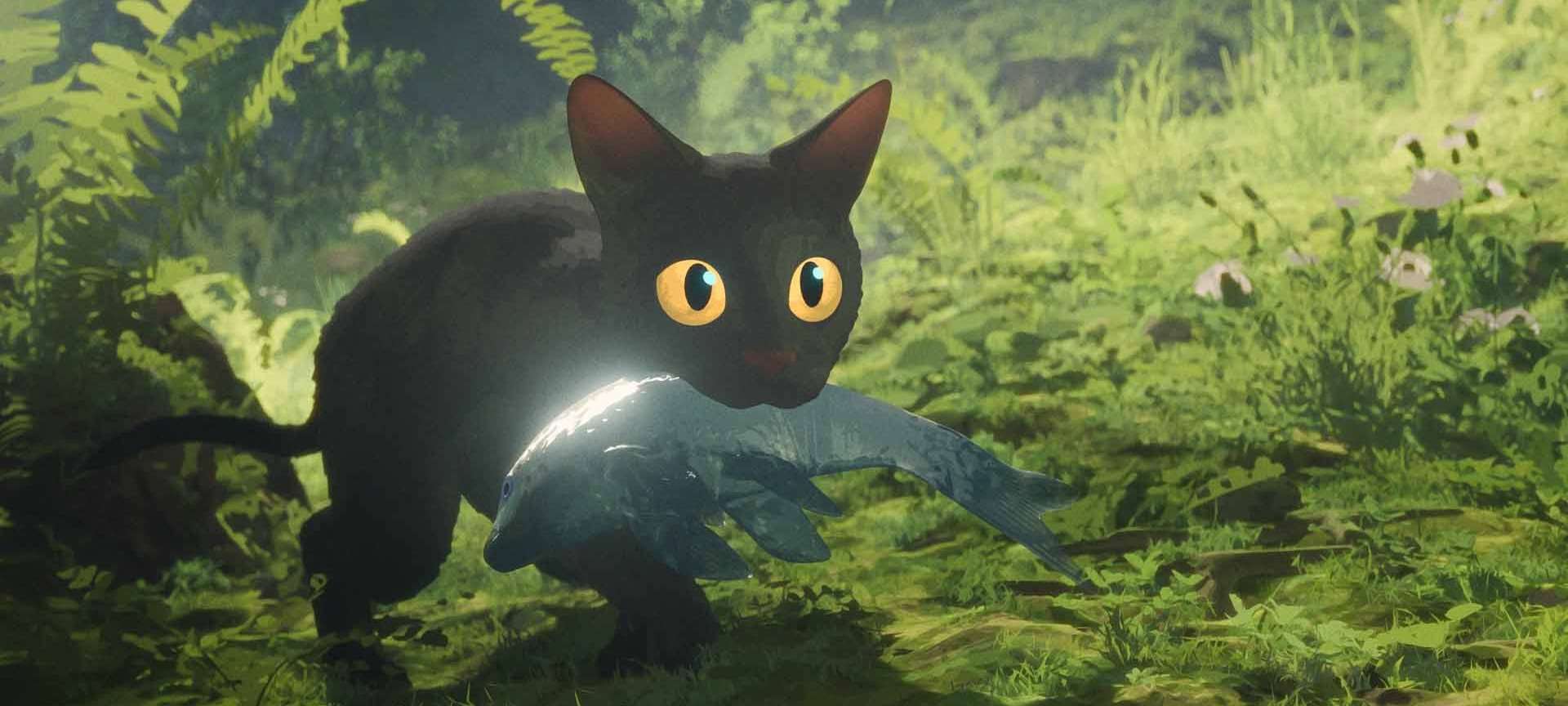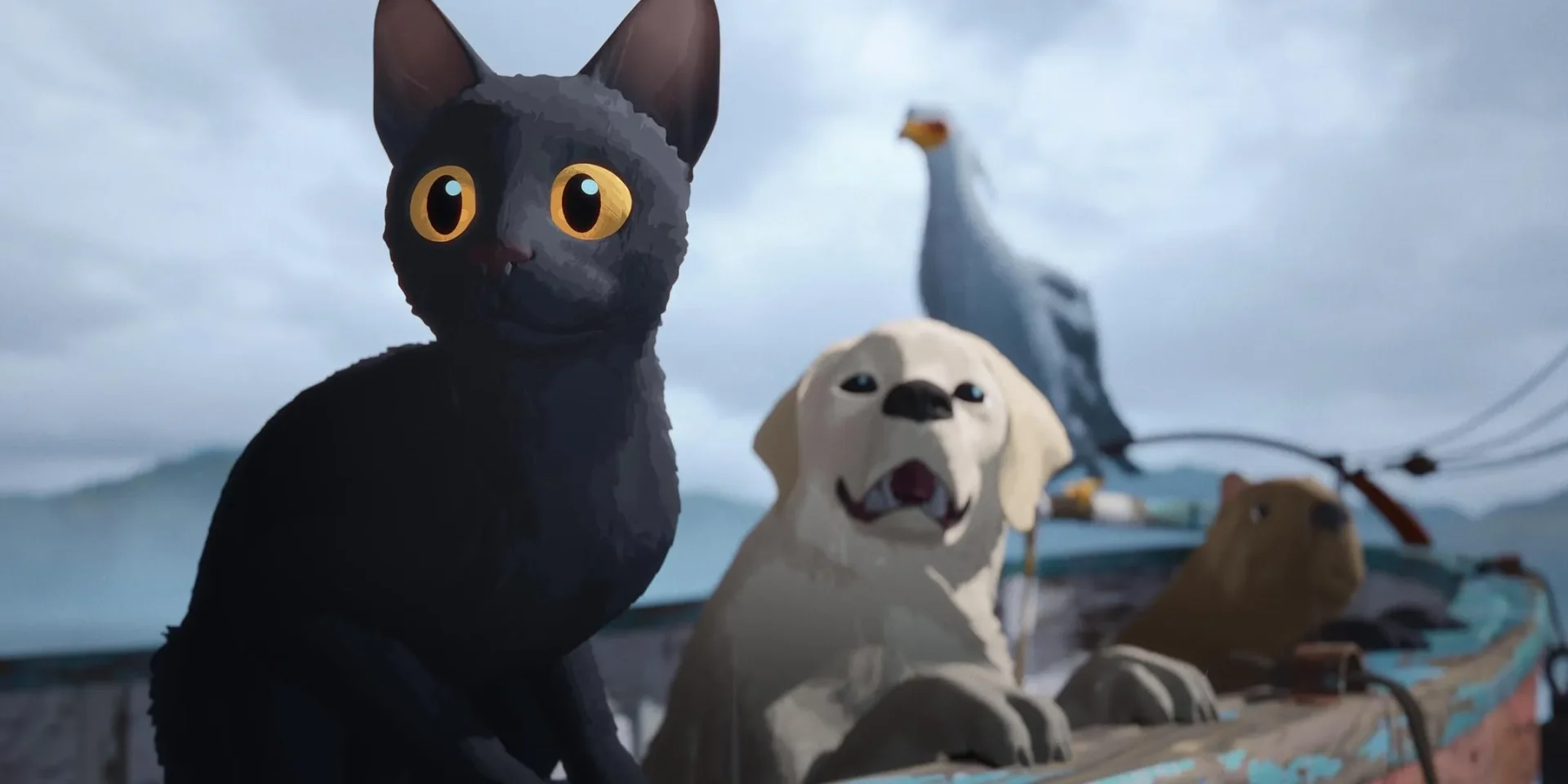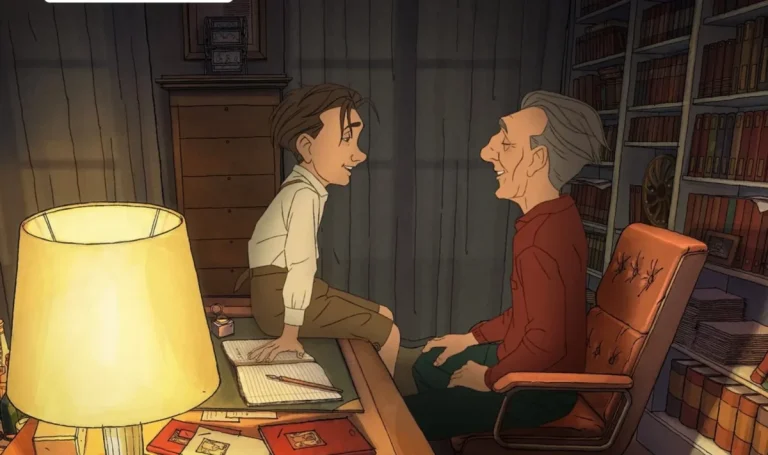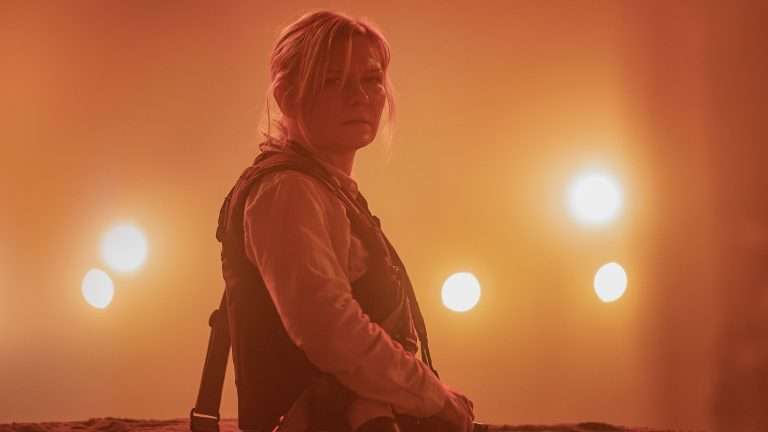We travel every day, don’t we? Most of the time, it is to familiar and known places—our offices, schools, or universities—by choice. Other times, circumstances force us toward destinations unknown. Yet, much like growth, journeys are inevitable. Gints Zibalodis’s dialogue-free film, “Flow” (2024), opens with a lone cat wandering among statues of its own kind—wooden carvings and paper drawings. Maybe once revered, now abandoned? Its solitude symbolises the passage of time and the fading significance once placed on a particular group or identity. Before this melancholic image settles in, catastrophe strikes. Survival already becomes a challenge for our meow-protagonist, and the movie’s flow begins.
“Flow” is a journey that reflects the immigrant experience—leaving behind familiarity, often not by choice but by necessity, navigating uncharted territories, and struggling for acceptance in communities that may not speak the same language or embrace differences. Even within our own cultures, acceptance can be elusive. It’s not always about language; sometimes, rejection comes in the form of silent disapproval, subtle exclusion, or an unwillingness to understand. “Flow” captures this reality in a way words never could, and that too with animated animals.
In the beginning, a pack of dogs fights over a fish, their instincts driving them to compete. But when a common enemy—the cat, now in possession of the fish—appears, their rivalry momentarily dissolves. The cat is outnumbered. Later, when one of the dogs is cast out from its group amid the world’s collapse, the flood, it approaches the cat, seeking companionship instantly. Yet, having endured rejection and hostility, the cat refuses. The cycle of exclusion continues. The once-dominant dog now finds itself a victim of the very behaviour it once inflicted—a stark reflection of real-world social dynamics.
Also Read: Flow (2024) Review: This Gorgeous Fantasy Adventure Is One Of The Year’s Best Animated Films
This dynamic reminded me of its portrayal in other films. One that stood out in my memory was the Brazilian film “Carandiru” (2003)—a film centred around Latin America’s largest prison. In it, Peixeira (played by Milhem Cortaz) is a ruthless and dominating presence. Though he is still a prisoner, he commands and controls other prisoners. His redemption arc forces audiences who once despised him to reconsider their judgment. As he lets go of his ego and arrogance, his isolation makes him yearn for care and love; it makes him become a totally different person with no hatred. Similarly, in “Flow”, a once-hostile dog changes its behaviour, seeking to play with others, including the cat. This suggests that even aggression, often rooted in survival and social pressure, can be softened through understanding and acceptance.

As the story continues to flow, new companions emerge: a capybara and a lemur, each bringing their own quirks. The capybara is friendly and easygoing, yet lazy, while the lemur hoards possessions without truly understanding their value. They do not choose to be together. Circumstances force them to cooperate—make them row in the same boat. This unlikely companionship reminds me of our own lives—of relationships that form not from blood ties but from the everyday encounters that shape us. The survival of this found family depends on collaboration.
Also Read: Our Journey With “Flow” – Captioning the Emotions of Sound
Adrift on a metaphorical boat, they move toward an uncertain future, unaware that their only hope lies in unity. They do not always get along. In fact, if the boat had been filled with members of the same species, their situation might have been even different. A group of lemurs that was on a different boat made it to the end with all their collected possessions. They still don’t have any idea of the human-made possessions, continue to wonder their own reflections on the mirrors; going through some level spiritual evolution!
But broken pieces can be rebuilt—if we cut off some of our past edges.
The concept of found family always gives me more hope—it emerges from acceptance and leads to survival. “Godzilla Minus One” (2023) explored a similar theme, illustrating how individuals brought together by circumstance can form powerful bonds, sometimes even stronger than those of blood relatives. It helps them go through tough times and helps them survive. Films often highlight the significance of acceptance, particularly among people of different races and backgrounds. In today’s world, this message feels more relevant than ever. “Flow”, without a single spoken word, conveys this idea through striking animated visuals alone.

Another film that explores a similar theme that had an impact on me in recent years is Ken Loach’s “The Old Oak” (2023), which presents a poignant and realistic portrayal of acceptance toward people from different places and cultures; one’s bold decision to welcome another of his own species, even most of his community are not welcome and pleased with it.
Also Read: Memoir of a Snail (2024) Review: Gorgeous Animations Bring to Life a Tough Message on Life’s Mundanity
No words are spoken in “Flow,” yet the struggle for belonging is as tangible as it is among the speaking species. To stand up for someone against your own community often means isolation. The bird who defends the cat pays a price. Left alone, its wings broken, its very nature shattered. Once in sync with its own kind, the bird now leads this newly formed family. Life flows forward, bringing new people into our lives.
Some stay briefly but leave lasting impacts; here, it is with the cat and the bird. Inspired by the bird’s sacrifice, the cat hesitates when confronted with the outcast dog. Perhaps those once-mean dogs were only acting out of peer pressure, forced into violence by their surroundings. Not everyone we help will stand by us in return. Yet, hope persists. Even if only a few transform because of kindness, that change matters. The capybara, that one dog, and the lemur stand as proof—abandoned by their own but held together by shared struggle.
The whale, appearing twice—accidentally or intentionally—offers salvation. And yet, who saves the whale? Perhaps kindness, like the tides, flows in cycles. Perhaps those we save will, in turn, save others. A defining moment arrives when the group finds themselves in an unfamiliar place—one that could be a haven or another test of survival. This mirrors the way immigrants often reach a supposed “promised land,” only to find new struggles waiting for them. Acceptance is not guaranteed; survival is not the same as belonging. The film makes no promises, only observations. The characters must make their own choices, just as we do.
Similar to Flow: The Wild Robot (2024) Review: Ambitious in Form, Domesticated in Content
The film’s ending does not offer easy resolutions. We do not always find closure, but we move forward regardless. “Flow” acknowledges a hard truth: acts of kindness can have consequences, sometimes pushing us into an entirely different world. But it also reminds us that, in the face of exclusion, compassion has the power to create something new—a family not bound by blood, but by survival, understanding, and the choice to stand together. Perhaps that is the essence of belonging—not just where we come from but who we choose to stand beside when the tides change.









